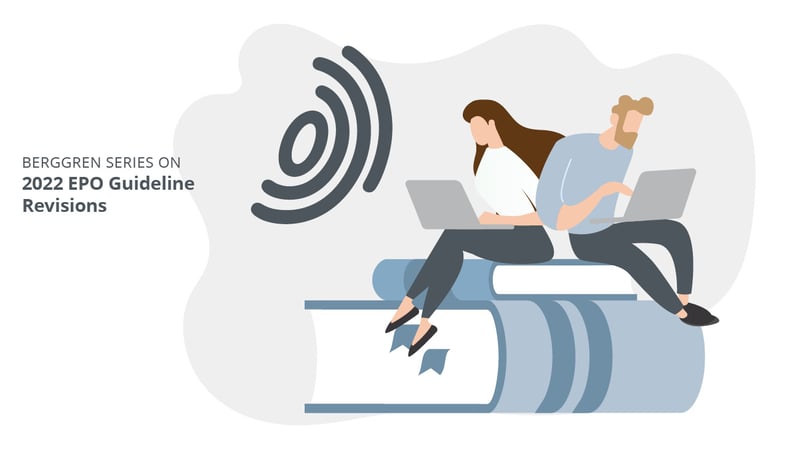In this fourth article of our 2022 weekly series addressing updates to the European Patent Office’s Guidelines for Examination, we continue last week’s theme and review changes arising from the Enlarged Board of Appeal’s decision in G 1/19 with respect to simulations and other computer-implemented inventions.
We will continue to address other revisions to the Guidelines in the European patent section of Monday’s Lexology newsfeed. (The first three articles in our EPO Guidelines update series addressing (1) amendments to the description, (2) partial priority, and (3) mathematical methods and AI, can be found here, here, and here.)
Background
In 2021 the EPO’s Enlarged Board of Appeal published its decision in case G 1/19, where it considered questions related to the patentability of computer-implemented simulations in the context of the European Patent Convention’s exclusion of programs for computers and mathematical methods from patentability.
This is the first time in the history of the EPO that the Enlarged Board of Appeal has addressed the issue of computer-implemented inventions in an admissible referral. While the referral arose from a patent application that related to simulating the movement of pedestrians through a building, the Enlarged Board provided a comprehensive review of current EPO practice for all computer-implemented inventions. Significant changes have been made to the Guidelines to reflect the decision – both specific modifications relating to simulations as well as general modifications to bring the Guidelines in line with the Enlarged Board’s review of current EPO practice.
2022 EPO Guideline Updates
In the latest edition of the Guidelines, the general description of examination practice has been updated to refer to the “two hurdles” of a) pure subject-matter eligibility and b) inventive step, discussed in more detail in last week’s article. This change to the Guidelines does not reflect a shift in practice, merely a re-expression in terms that are perhaps easier to understand.
The substantive changes to the Guidelines begin in the section on mathematical methods, where the following statement has been added:
If steps of a mathematical method are used to derive or predict the physical state of an existing real object from measurements of physical properties, as in the case of indirect measurements, those steps make a technical contribution regardless of what use is made of the results.
This is a clear and important indication that a broad range of simulations that are based on physical measurements of properties of a system are technical. Most significantly, the simulations are considered technical regardless of the use that is made of the results. It has been a somewhat inconsistent aspect of EPO practice in this field to require that the results of a mathematical method be applied to a physical system in order to confer technical character on the method. The statement by the Enlarged Board not only provides a clear and direct argument against that position in the case of simulations, but also provides a basis for similar arguments in other kinds of mathematical methods.
The section of the Guidelines that deals specifically with simulations has, unsurprisingly, also seen extensive updates. The headline update is the main conclusion of the Enlarged Board in G 1/19: that the patentability of simulations should be assessed in the same way as any other computer-implemented invention. An earlier Technical Board of Appeal decision in T 1227/05 suggested that a simulation has technical character if the system being simulated was itself technical, but the Enlarged Board in G 1/19 pointed out that this is not a general principle that applies to all simulations. Instead, the generally applicable approach is the same as for any other computer-implemented invention. The position reflected in the updated Guidelines is therefore a slight departure from earlier practice for simulations.
In further additions to the Guidelines, different types of simulations are discussed, such as “purely numerical” simulations and “simulations interacting with the external physical reality”. Simulations that interact with physical reality may have technical character as a result of their interaction with the real world. Purely numerical simulations, i.e., those without this interaction with the real world, can still have technical character, but this will arise from their adaptation to a specific technical implementation or the intended technical use of the results of the simulation. Importantly, where technical character arises from an intended technical use, the claim in which the simulation is defined must be limited to that intended technical use.
Again, while these comments are provided primarily in the context of simulations, they often can be applied to other types of computer-implemented inventions. For example, the intended technical use is referred to again in the context of data structures. Other general comments that have been added to the Guidelines include the statement that the mere presence of technical considerations is not sufficient to confer technical character on a mental act.
Finally, a section of the Guidelines providing examples of applying the COMVIK approach, i.e. the second hurdle, has been completely rewritten. The previous example, which has now been removed, reflected the earlier decision in T 1227/05 mentioned above. Since the Enlarged Board clearly moved away from the conclusions of T 1227/05 in its decision in G 1/19, the example has been replaced with one that now closely follows G 1/19.
Conclusions
The changes to the Guidelines arising from G 1/19 reflect the fact that even though the decision was primarily concerned with computer-implemented simulations, the discussion and principles can be more widely applied to other types of computer-implemented inventions and even mental acts.
The changes in themselves do not represent major shifts in EPO practice, but should be helpful in improving consistency and understanding of EPO practice in this area.




